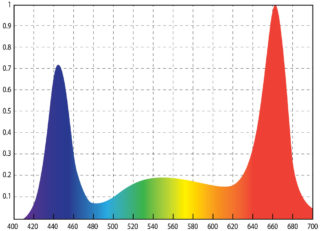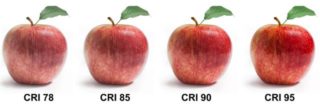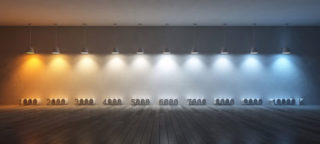The popularity of LED lamps has led to various questions regarding the features of their functioning. There are many rumors and speculations about the effects of LEDs on humans.
Light, its spectra and impact on people
Light is visible radiation, acting as the only irritant of the eye, which leads to visual sensations that provide visual perception of the world. Images appear on the retina and visual images are formed. In addition, light contributes to the implementation of other important reactions that have a reflex and humoral character.
The incidence of light on the organ of vision causes impulses propagating through the optic nerve to the optical region of the cerebral hemispheres. Depending on the intensity, the central nervous system is excited or suppressed, while the physiological and mental reactions are rebuilt, the general tone of the body changes, and the active state is maintained.
By a spectrum is meant a distribution of radiation intensity values over a wavelength. Distinguish between red, orange, yellow, green, cyan, blue and violet light spectra. Each of them specifically affects the human body.
Color rendering index
In terms of human impact and lighting quality, the CRI value of the LED is important. The Color Rendering Index, also known as the color rendering index, is a parameter that describes how much the visible color matches the natural color of the body when illuminated by the heat source used. Its value is calculated as the average of eight colors, which are designated from R1 to R8.
The red color deserves special attention. It is designated R9. It is not always indicated. The value of R9 affects the transmission of tone of human skin. The red tint is very subtly perceived by the human eye. Even the smallest deviations are noticeable. If the lighting is of poor quality, the human eye immediately notices everything: all defects, for example, acne and pallor. Therefore, a check on R9 is carried out to obtain a more accurate result.
Quality calculation
The color rendering index for LED lamps is necessary to determine the quality of the light source in the process of its creation. To calculate the index value, use a special checklist. It has eight standardized colors, all faded and unsaturated.
Measure the parameter value for each color. These measurements let you know how colors will be transmitted under a specific lamp. For measurements, reference light is used. Then, the obtained information is compared using the methodology of the International Commission for Lighting, and information is obtained on the degree of deviation from the standard.
Recommended Values
The maximum CRI value is 100. But striving for such an indicator is not always necessary. Different types of lamps have different index values. Some are suitable for rooms where precision work is carried out. Others are suitable for warehouse buildings. Storefronts selling fabrics or finishing materials should correctly transmit palettes. The same requirements for exhibitions in museums. In this case, the parameter value should fluctuate in the range from 90 to 100.
In rooms where it is important that there is comfortable light for the eyes, and the display of saturation does not play a role, the color rendering index range from 70 to 90 is considered acceptable. The color rendering of LED lamps in the vast majority of cases is in this range. It is possible to achieve the best result, but this leads to a significant increase in the price of the final product. When the diode is used in residential, educational, office and medical facilities, the range of 70-90 is more than enough.
Where color is not important, use light sources for which the index value is below 60. This applies to street lighting and warehouse lighting. The human eye notices deviations in the color palette if the index value differs by more than 5 points. Smaller differences for the eye are elusive.
The reference is the sunlight of the northern hemisphere and the light of a tungsten light bulb. The color rendering value for them is 100. But here there are pitfalls. For example, if you measure the glow of the sun in the northern hemisphere, you will notice that it conveys red shades worse. A tungsten light bulb has a blue spectrum problem.
Difficulty in measuring
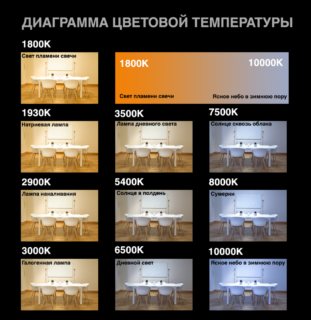 Despite the apparent consistency, the CRI coefficient can hardly be called ideal. Checks show that white LEDs have problems with R9 - the red part of the spectrum is not displayed correctly. Therefore, in 2007, the international commission recognized that it is not correct to use the color rendering index of LED lamps with respect to LEDs.
Despite the apparent consistency, the CRI coefficient can hardly be called ideal. Checks show that white LEDs have problems with R9 - the red part of the spectrum is not displayed correctly. Therefore, in 2007, the international commission recognized that it is not correct to use the color rendering index of LED lamps with respect to LEDs.
Light sources may have the same index parameter. However, the visual assessment of the color display will be very different. Due to the large number of different sources of artificial lighting, a need arose for a more thorough verification of the color reproduction. Although CRI is still the main mandatory parameter that is used during light quality assessment, alternatives are already being proposed. These include CQS and TM-30.
Alternative assessment options
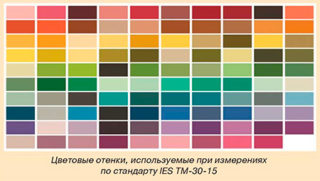 The CQS symbology is used to denote a color quality scale that uses 15 saturated colors. Unlike CRI, a different formula is used for calculations. For example, in the case of the color rendering index, LEDs that have gaps in the red spectrum could remain with a large total indicator. CQS eliminated this possibility. The index value is calculated as the root of the sum of the squares of the changes for each color. Therefore, the flaws of even one strongly affect the final value. But this technique has its drawbacks, because it does not fully take into account the tone and color saturation.
The CQS symbology is used to denote a color quality scale that uses 15 saturated colors. Unlike CRI, a different formula is used for calculations. For example, in the case of the color rendering index, LEDs that have gaps in the red spectrum could remain with a large total indicator. CQS eliminated this possibility. The index value is calculated as the root of the sum of the squares of the changes for each color. Therefore, the flaws of even one strongly affect the final value. But this technique has its drawbacks, because it does not fully take into account the tone and color saturation.
In 2015, another attempt was made and presented TM-30-15. In it, measurements are carried out according to 99 control colors. Using the standard TM-30-15 allows you to increase the accounting for hue and saturation when controlling light quality. In essence, this standard includes two indexes. Accuracy has values from 0 to 100, and saturation from 60 to 140. Calculating the value of this standard is the most difficult thing and not only because of the number of control colors. We have to simplify the results to 99 points, divide them into 16 color groups and distribute them on a special vector diagram. Then the obtained values are compared with the standard.
Comparison of indices and actual light
If a good bulb is used, all three of the mentioned coefficients will coincide. But for low-quality goods, discrepancies can be observed. This is due to the fact that “very tricky” manufacturers make the phosphor in such a way that the emphasis goes to 8 main shades used for comparison. All the rest are simply not taken into account. But the human eye always notices such fakes.
It is important to check the bulbs, especially when it comes to acquiring a nursery.When something appears for the first time in life, it is perceived as the norm. And then it becomes difficult to relearn.
Other lighting sources
All lamps used must be measured. The following values are obtained:
- Incandescent lamps. Possess close to solar color rendition. On a CRI scale, their value is 100. But visually there is a shift towards warm shades.
- Halogen lamps. The color rendition is close to the value of tungsten bulbs, therefore, a large luminous flux is observed.
- Sodium light bulbs. The luminaires provide a fairly low color display. The index value fluctuates around 40.
- Arc mercury fluorescent lamps. By their values are located near sodium. The blue spectrum prevails, therefore, DRL is not used for growing plants.
- Fluorescent light bulbs. The range of changes can vary within significant limits: from 60 to 90. The exact value depends on the phosphor used.
LED bulbs occupy an intermediate position with indicators of 70-90 on a CRI scale.
Impact on people
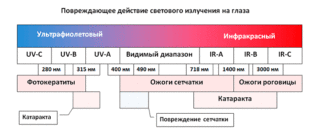 You should know how LED bulbs can affect people:
You should know how LED bulbs can affect people:
- The main amount of consumed power goes to light radiation. The rest of the energy is spent on heating, but its value is so small that the ice does not melt in a few minutes, if brought close to it. Therefore, fear of burns is not necessary.
- LED bulbs do not contain heavy metals, radioactive elements or toxic substances.
In the event of damage, LED lamps will do less harm to human health than all other options. Therefore, it is better to depend on such a light source than on other more dangerous lamps.
